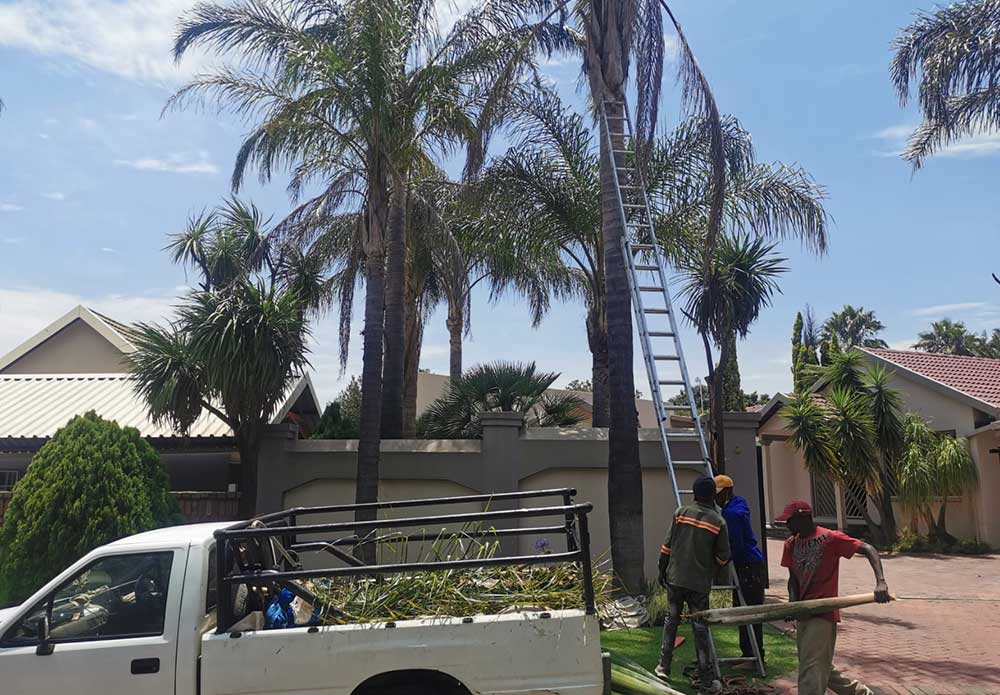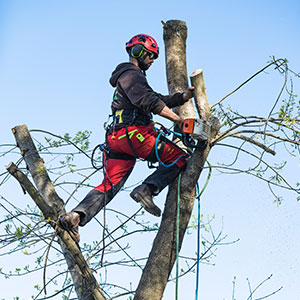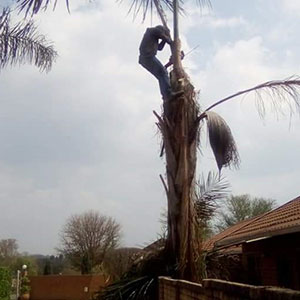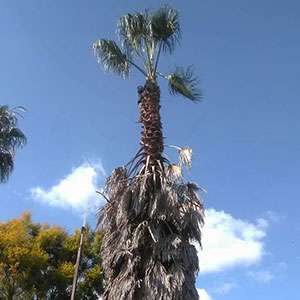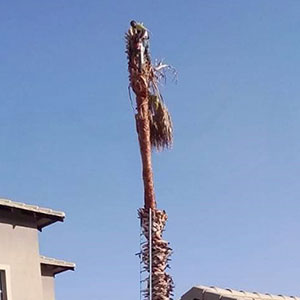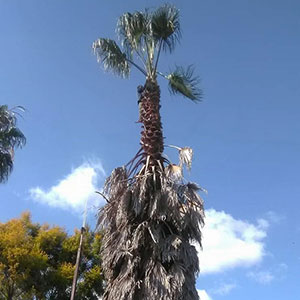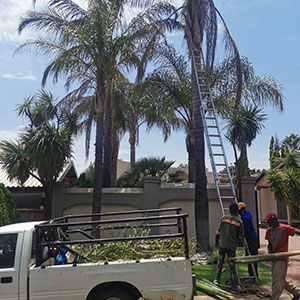Tree Felling Pretoria: Trimming Palm trees is a common sight in residential properties, where they are appreciated for their beauty, shade, and commercial value. However, like any other plant, palm trees require regular care and maintenance to thrive and avoid problems. One of the most essential tasks in palm tree care is trimming, which involves removing dead, diseased, or excessive fronds and flowers from the tree. In this article, we will discuss the benefits and techniques of palm trimming and provide some tips on how to do it safely and effectively. Looking for a stump grinding company
Why Palm Tree Trimming is a Must for Every Homeowner
Palm trimming serves several purposes that benefit both the tree and its environment. Some of the main reasons to trim palm trees are:
- Health: Removing dead or diseased fronds can prevent the spread of infections, fungi, or pests to healthy parts of the tree. Also, trimming can stimulate new growth and improve the circulation of air and light in the canopy, which can reduce the risk of fungal diseases, sunburn, or wind damage.
- Safety: Palm fronds can weigh several pounds and fall unexpectedly, posing a hazard to people, pets, and property. Also, overgrown or low-hanging fronds can obstruct the view of drivers and pedestrians, increasing the risk of accidents. By trimming the palm tree regularly, you can eliminate these risks and create a safer environment. Tree Felling Centurion
- Appearance: A well-trimmed palm tree looks neater, healthier, and more attractive than a neglected one. Also, by removing the old fronds, you can expose the trunk and reveal its natural beauty, which can enhance the landscape’s aesthetic value. Looking for tree removal experts
- Maintenance: By trimming the palm tree regularly, you can save time, money, and effort in the long run. For example, if you wait until the fronds are too long or too heavy, you may need to hire a crane or a specialized crew to remove them, which can be costly and time-consuming. Also, by preventing the accumulation of dead fronds, you can reduce the risk of fire, vermin, or odors, which can affect the surrounding areas.
When to Trim Palm Trees?
The timing of palm trimming depends on several factors, such as the species, the climate, and the purpose of the trimming. Generally, the best time to trim palm trees is during the late spring or early summer, after the new growth has emerged but before the old fronds become too dry and brittle.
This allows the tree to recover more quickly and to avoid the stress of extreme temperatures or weather conditions. However, if the palm tree has a disease or a pest infestation, it may need to be trimmed more frequently or at specific times, depending on the severity and type of the problem. Also, if the palm tree is located near power lines or structures, it may require special permits or regulations for trimming, which should be consulted beforehand.
Transform Your Palm Trees into Stunning Works of Art with These Expert Trimming Tips
Trimming a palm tree requires some preparation, tools, and techniques to do it correctly and safely. Here are some steps and tips to follow when trimming a palm tree:
- Safety first: Before you start trimming, make sure you wear appropriate protective gear, such as gloves, safety glasses, and a hard hat. Also, check the ladder’s stability, and secure it with a rope or a harness if you need to climb the tree. If the palm tree is tall, near power lines, or requires specialized equipment, it’s best to hire a professional tree trimmer, who has the expertise, tools, and insurance to handle the job.
- Identify which fronds to trim: To determine which fronds to remove, look for the ones that are dead, brown, yellow, or hanging down below the horizontal line. Avoid cutting healthy green fronds, as they are still providing food and energy to the tree. Also, be aware of the “boots,” which are the dead leaf bases that encircle the trunk. While they may look unsightly, the boots protect the trunk from damage and should not be removed unless they are completely dry and loose. 5 Steps To Successful Tree Felling Company
- Remove flower and fruit stalks: If the palm tree produces flowers or fruits, you should remove the stalks once they have completed their cycle. Not only do they look messy, but they can also attract insects, birds, or rodents that may damage the tree or cause nuisances. Also, by removing the flower stalks, you can redirect the tree’s energy towards growth and maintenance, rather than reproduction.
- Use proper tools: To make clean and efficient cuts, use sharp and clean pruning tools, such as a pruning saw or a pole saw. Avoid using chainsaws or other power tools, as they can cause excessive damage to the tree and create dangerous debris. Also, sanitize the tools before and after use, to prevent the spread of diseases or infections.
- Trim fronds carefully: When trimming the fronds, cut them as close to the trunk as possible without damaging the trunk or leaving stubs. Use a smooth, even motion, and avoid twisting or bending the fronds, as this can tear the fibers and create wounds. Also, be careful not to remove too many fronds at once, as this can shock the tree and reduce its vitality. A general rule of thumb is to remove only a third of the fronds per year, depending on the size and condition of the tree.
- Dispose of trimmings properly: After trimming, collect and dispose of the removed fronds and stalks properly. Do not leave them on the ground, as they can attract insects, fungi, or rodents, and create a fire hazard. Instead, compost them or place them in yard waste containers, according to local regulations.
- Monitor the tree’s health: After trimming, observe the tree’s response and monitor its health and appearance. Check for any signs of stress, such as wilting, discoloration, or drooping, and take action if necessary. Also, inspect the trunk and the roots for any damage or decay, which may indicate underlying problems.
Conclusion
Trimming palm trees is an essential and rewarding task that can improve the tree’s health, safety, appearance, and maintenance. By following the proper techniques and precautions, you can ensure that your palm tree thrives and adds value to your landscape. However, if you’re not confident or experienced in trimming, or if your palm tree requires specialized care or equipment, it’s best to hire a professional tree service that can handle the job safely and efficiently. Remember, safety always comes first, and a healthy palm tree is a happy palm tree.

